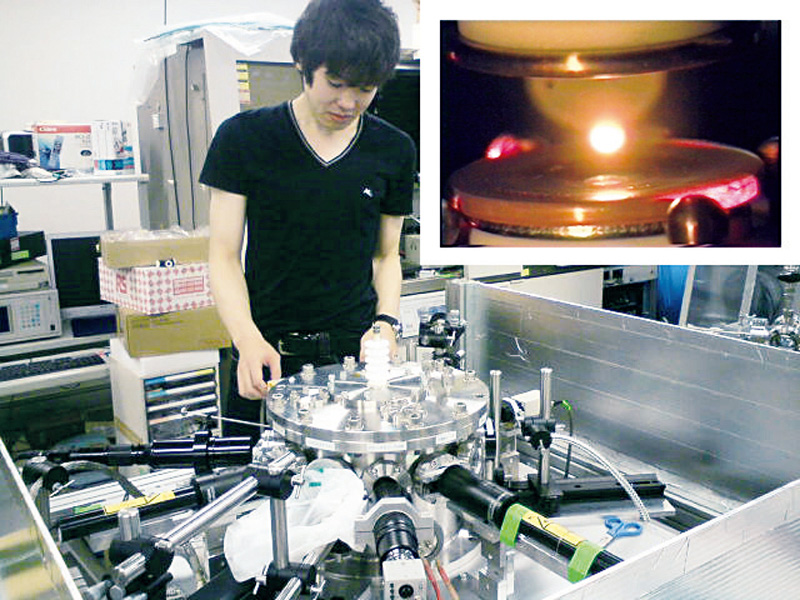
Liquid State Materials Laboratory
Mastering a world of super high temperatures with the space technologies
In an environment where the temperature exceeds 2000° C, almost all the substances around us will melt or evaporate. It is possible, however, to synthesize new substances that, thus far, no one has been able to find by cooling the extremely high temperature to room temperature at once. Hence, our laboratory is studying the atom arrangement and properties of the substances subject to extremely high temperatures by using a method that combines the electrostatic levitation method, which we jointly developed with the Japan Aerospace Exploration Agency, and the synchrotron radiation method of the Spring-8 facility.

- Faculty Name
- MASAKI, Tadahiko
- Keyword
- New materials,Measurement technologies,Alloys,Non-container process
- Laboratory location
- Research Building TOYOSU Campus 10F 10C25
This lab is for this SDG activity:
STUDY FIELDS
- Materials science and engineering
- Applied physics
- Astronautics
- Aeronautical engineering
FOR SOCIETY
Our students are expected to acquire knowledge of various substances by melting them. Moreover, through experiments conducted in extremely high temperatures and under microgravity, they will learn various production technologies and basic safety control measures.
RESEARCH THEMES
- Research on the melt structure by using X-ray scattering techniques
- Research on molecular dynamics calculators and the visualization of atomic dynamics
- Synthesis of new materials resistant to high temperatures by using the levitation method



